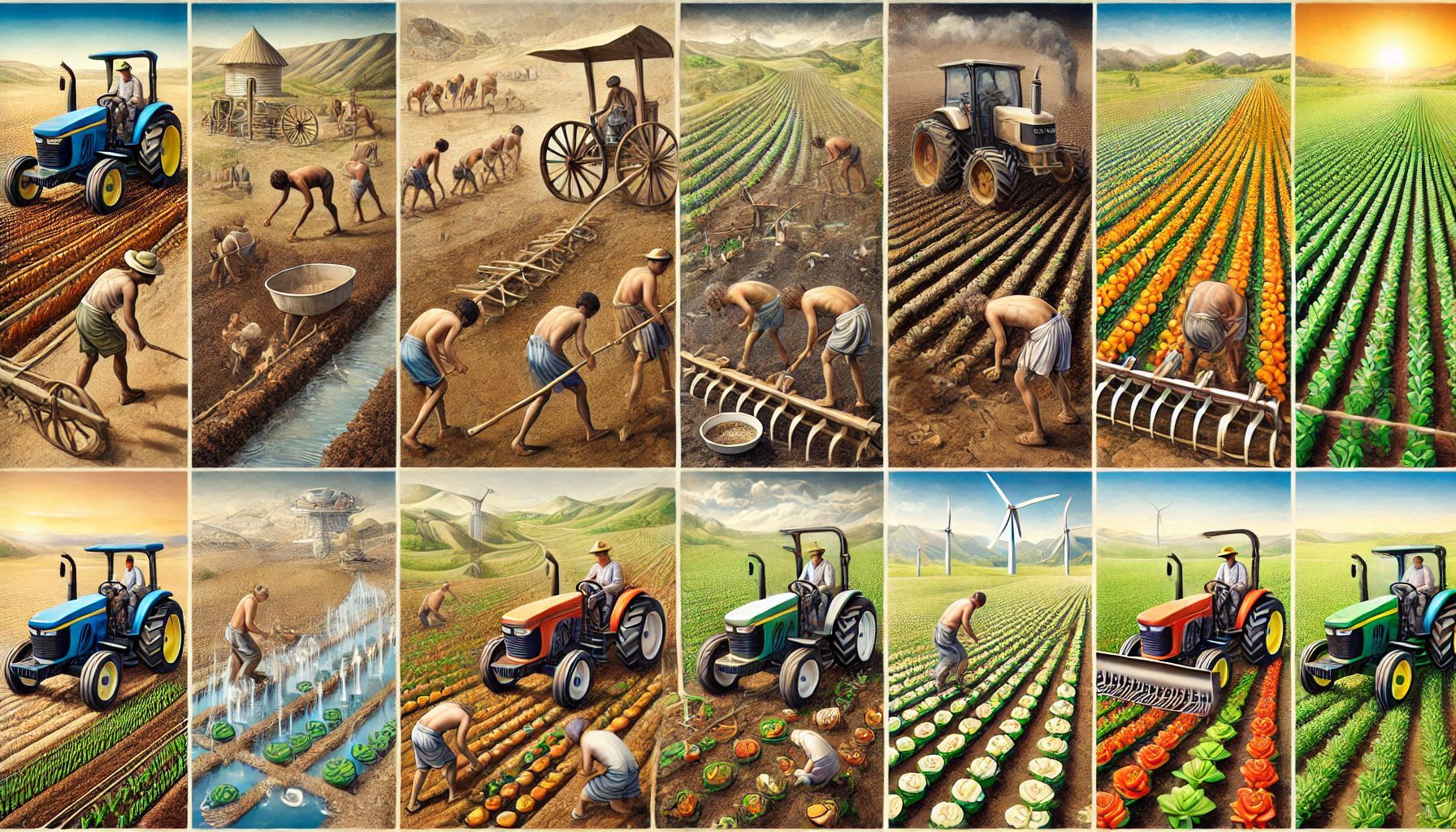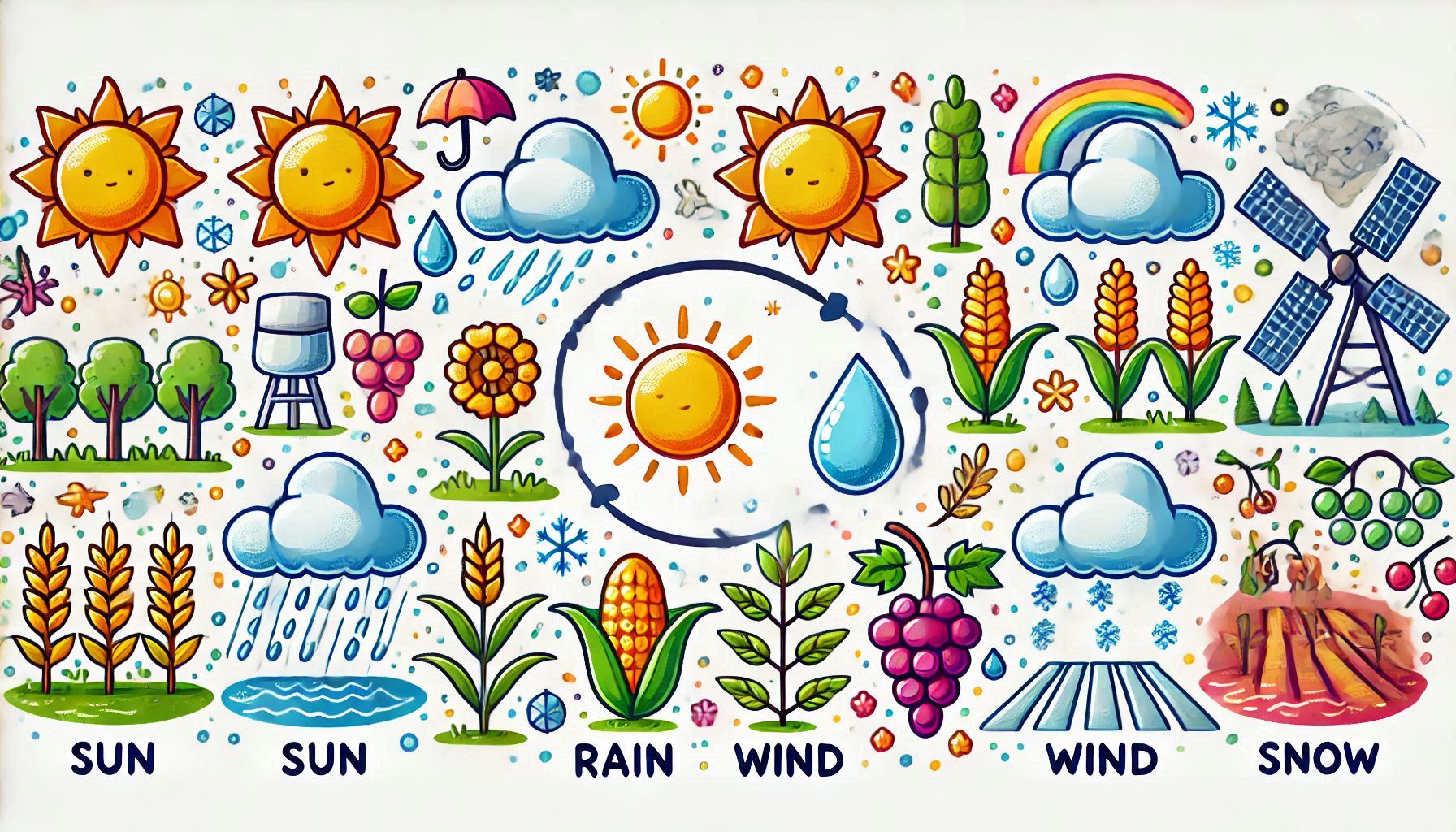Cropping pattern and cropping system – Intensive cropping- Sustainable agriculture – IFS One Liner
Cropping Pattern and Cropping System
- Cropping pattern refers to the sequence and spatial arrangement of crops or crops and fallow on a given area.
- Cropping system includes cropping patterns and their interaction with farm resources and available technology.
- Cropping systems have existed in India since ancient times, with mention of sequential cropping in the Vedas.
- Mixed cropping is often used under dryland conditions to reduce risk of crop failure.
- Sequential cropping involves growing different crops one after another in the same field during the year.
- Cropping system refers to the combination of crops in time and space dimensions.
- Cropping systems maximize land productivity and minimize degradation.
- Multiple cropping increases food production without expanding agricultural land.
- Cropping intensity is the number of crops grown per unit of land per year.
- Higher cropping intensity is observed in regions like Punjab and Tamil Nadu (over 100%).
- In Rajasthan, cropping intensity tends to be lower.
- Intercropping involves growing two or more crops simultaneously in the same field.
- Mixed intercropping does not follow a row arrangement, often used in rainfed areas.
- Row intercropping involves planting crops in distinct rows.
- Strip intercropping uses wide strips of crops grown together for agronomic interaction.
- Relay intercropping plants a second crop after the first reaches the reproductive stage but before harvest.
- The benefits of intercropping include better resource use and higher yields.
- Intercropping can reduce pest and disease pressure.
- Sequential cropping is when crops are planted one after the other with no competition.
- Double cropping involves growing two crops on the same land in a year.
- Triple cropping is growing three crops in sequence on the same land in a year.
- Quadruple cropping involves four crops grown sequentially in a year.
- Ratoon cropping uses crop regrowth after harvest to produce another cycle of crops.
- Intercropping systems can lead to higher overall farm productivity and economic returns.
- Intercropping systems improve the resilience of crops by providing stability in case one fails.
- Multiple cropping systems can help reduce the need for external inputs like fertilizers and pesticides.
- Mixed intercropping is often used to spread risk and stabilize farm income.
- In intercropping, complementary crops are selected to maximize resource use.
- The main goal of intercropping is to optimize the use of land, labor, and other resources.
- Sequential cropping helps in maximizing land productivity through continuous cropping.
- Relay cropping involves overlapping the growing seasons of two crops.
- The success of intercropping depends on selecting compatible crop species.
- Sequential cropping is more water-efficient than growing multiple crops at the same time.
- A good cropping system should be environmentally sustainable and economically viable.
- Cropping systems should be designed to fit the local climatic conditions.
- Traditional cropping systems often prioritize crop diversity and soil fertility maintenance.
- Crop rotation as part of a cropping system helps in managing pests and diseases.
Intensive Cropping
- Intensive cropping minimizes the turnaround period between one crop and the next.
- Garden land cultivation is an example of intensive cropping.
- Intensive cropping systems generally have a higher cropping intensity.
- Intercropping, relay cropping, and sequential cropping are all part of intensive cropping.
- Crop intensification refers to increasing the number of crops per unit area per year.
- In intensive cropping, the goal is to maximize output while using available resources efficiently.
- Intensive cropping systems increase food production in areas with limited land.
- Crop intensification techniques often involve adjusting planting schedules and crop choices.
- Intensive cropping requires efficient land preparation and water management.
- Crop diversification in intensive systems can help reduce vulnerability to crop failure.
- Multiple cropping is essential in intensive cropping systems to increase land productivity.
- Crop intensification is necessary to meet the food demands of growing populations.
- Intensive cropping systems can be highly productive but require significant resource input.
- The efficiency of intensive cropping depends on the proper balance of water, soil, and nutrients.
- The use of improved crop varieties is critical for achieving high yields in intensive cropping systems.
- Intensive cropping systems often lead to soil depletion if not properly managed.
- Fertilizer and pesticide use is higher in intensive cropping, raising concerns about environmental impact.
- The increase in cropping intensity can improve the economic returns for farmers.
- Crop intensification can help reduce the time between harvests, leading to more frequent cash inflows.
- Intensive cropping is common in regions with good irrigation infrastructure.
- Proper management practices are essential to prevent degradation in intensive cropping systems.
- Intensive cropping often requires heavy machinery for land preparation and harvesting.
- The sustainability of intensive cropping systems relies on careful resource management.
- Diversified cropping in intensive systems can provide various products for the market.
- Intensive cropping is particularly beneficial in regions with high population densities and small land holdings.
- Crop intensification can lead to greater food security by maximizing the productivity of available land.
Sustainable Agriculture
- Sustainable agriculture aims to maintain productivity while conserving environmental resources.
- The core goal of sustainable agriculture is to satisfy human needs without compromising environmental integrity.
- Sustainable agriculture minimizes the use of nonrenewable resources while maintaining soil fertility.
- The long-term success of sustainable agriculture depends on integrating biological cycles and natural controls.
- Crop rotations and agroecological practices are fundamental to sustainable agriculture.
- Integrated pest management (IPM) is a sustainable approach to controlling pests using natural methods.
- Sustainable farming methods help reduce the environmental footprint of agriculture.
- Soil and water conservation are key components of sustainable agricultural practices.
- Organic farming is a form of sustainable agriculture that emphasizes minimal external inputs.
- Integrated nutrient management helps reduce the use of chemical fertilizers in sustainable agriculture.
- Sustainable agriculture promotes biodiversity and reduces monoculture farming.
- Crop diversification is crucial for improving soil health and ecosystem services in sustainable agriculture.
- Sustainable agriculture helps in mitigating climate change by reducing carbon emissions from farming.
- Conservation tillage is a common practice in sustainable agriculture to maintain soil structure.
- Precision farming allows for more efficient resource use and minimizes environmental impacts.
- Sustainable agriculture can help farmers reduce costs and increase profitability by improving efficiency.
- Water-saving irrigation methods like drip irrigation are essential for sustainable farming.
- Agroforestry is a sustainable practice that integrates trees with crops to improve yields and protect the environment.
- The goal of sustainable agriculture is not only to produce food but also to ensure economic viability for farmers.
- Sustainable agriculture incorporates social, environmental, and economic dimensions to ensure long-term sustainability.
- Sustainable practices are designed to increase the resilience of agricultural systems to climate change and other challenges.
- By using organic fertilizers, sustainable farming systems help build soil organic matter and improve soil health.
Integrated Farming System (IFS)
- Integrated farming systems combine different agricultural activities, such as crops, livestock, and aquaculture, for improved sustainability.
- IFS aims to improve resource efficiency and increase farm productivity by integrating multiple enterprises.
- Wetland-based IFS includes combinations like crops, fish, and poultry for diversified farm income.
- Dryland-based IFS often includes crops, goats, agroforestry, and horticulture to enhance farm sustainability.
- Garden land IFS systems may incorporate dairy, biogas, and sericulture for better resource use.
- IFS systems are tailored to local environmental conditions and available resources.
- IFS systems help diversify income sources, reducing farm risk and increasing profitability.
- Recycling of nutrients and waste in IFS systems improves farm sustainability and reduces pollution.
- IFS provides year-round employment opportunities for farm families.
- IFS systems increase the efficient use of land, labor, and capital.
- The integration of crop, livestock, and aquaculture in IFS systems can help reduce input costs.
- IFS is beneficial for improving soil health through organic matter recycling.
- The main goal of IFS is to enhance farm income while promoting ecological sustainability.
- IFS helps farmers adapt to climate variability by diversifying their production systems.
- Integrated farming systems enhance food security by providing a balanced diet and additional income sources.










